Recently, I published a step-by-step guide on building a Noise-Cancelling Passive Loop (NCPL) antenna. Evidently, this antenna project really resonated with readers! [See what I did there? If so, my apologies!]
I think this passive loop antenna project has been so appealing because (1.) most of us around the world are sheltering at home due to the Covid-19 pandemic and (2.) this project is simple and you likely have all of the components in your tool shed or junk box at this very moment.
A number you have written to tell me about your antenna builds and some of you have agreed to allow me to share your projects with the SWLing Post community.
Below, you’ll find three fine homebrew examples of the NCPL antenna–all of which were made with what these fine radio enthusiasts had on-hand:
Jerome van der Linden
Jerome writes:
Hello Thomas,
Well, I took up the challenge and built a NCPL antenna pretty close to your instructions.
Unfortunately, the coax I had available used (had aluminium shielding, and too late into the project I discovered solder would not take to it. My solution was to cannibalize a coax cable joiner (see photos attached), where – normally – the centre conductors are joined / held by a plastic centre piece and screw fittings.
The braid / shield for the two bits of coax is clamped / squeezed by an outer metal piece. My cannibalising effort involved removing the plastic centre bit which joins the two centre cores, and keeping just the outer metal component which I used (after completely cutting through the coax) to clamp the two metal braid sections, while the two centre copper bits were far enough apart for me to solder the leads for the ferrite balun.
Of course, I could not do the same at the top of the loop where the internal and external conductors need to swap over. I soldered some quite thick copper wire (perhaps 2mm in diameter) to each center core, pushed the center core into the opposing coax and coiled the 2mm thick copper tightly around each end of the coax.
Once it was all taped up it looks no worse than yours, and it does indeed WORK! [see photo above]
Here in Oz, I could not source the identical ferrite, but I think it’s pretty close. Best performance for me is on 11MHz, where the Radio New Zealand signal on 11725 is markedly better using the loop than the internal whip on my Tecsun PL-880. Other bands not quite so significant, but the Noise level is definitely lower.
As you say, Jerome, once all packaged up, it looks great! Sure, the mixture of materials you had on hand wasn’t ideal (aluminium shielding, etc.) but you found a way to make it work from the resources you had in your home. And I love the fact it’s lowed your RFI level! Thanks for sharing!
Giuseppe Morlè (IZ0GZW)
Dear Thomas,
I’m Giuseppe Morlè (IZ0GZW), from Formia, central Italy, on the Tyrrhenian Sea.
I wanted to build your noise canceling loop seen on SWLing Post …
seems to work well especially from 40 meters. upward…
the diameter is 50 cm.
I will do other tests soon.
You can see the initial test on my YouTube channel via this link:
Thanks for the nice idea and a greetings from Italy.
73. Giuseppe IZ0GZW
Thank you, Giuseppe! What an amazing view you have there from your balcony! I’m quite impressed your PL-660 can take advantage of this design so well. We look forward to your other tests! Grazie mille!
John Mills
Hi Thomas,
My idea was to use a fitness hoop 75cm diameter bought off eBay. I removed the flashy striping to reveal a plastic like hoop that was joined in one spot with a plastic insert.
I have wrapped the whole hoop in tin-clad copper foil tape that has a conductive adhesive backing, but to be sure I have soldered all the overlapping seams. I drilled two holes opposite each other for the upper foil connections and the lower exit to the Balun.
Hopefully the three pictures will be helpful, I did the 4 turn design on Airspys website and it works really well connected to my RSPdx.
73
John
Thank you, John. What a fantastic way to build the NCPL antenna without using a coax for the loop. Indeed, since your plastic hoop has a small insert in the middle, you’ve an ideal spot to make the shield to center conductor cross-over. Very clever! I also like how you mounted the 1:1 Balun (or Unun) on a small board. Thanks for sharing this.
Got Loops?
Post readers: If you have your own unique NCPL antenna design, please consider sharing it with us! Contact me with details and photos. I’ll plan to publish at least one more post with examples here in the near future.
Do you enjoy the SWLing Post?
Please consider supporting us via Patreon or our Coffee Fund!
Your support makes articles like this one possible. Thank you!

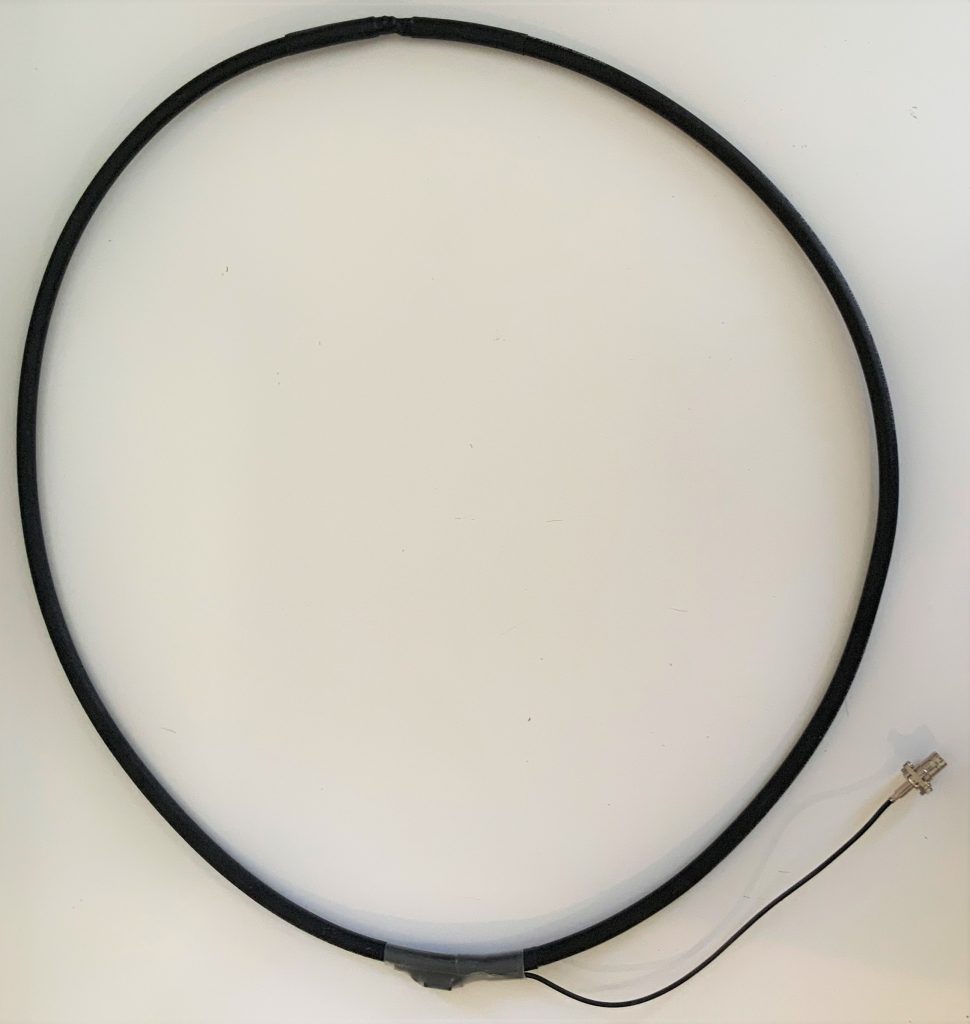
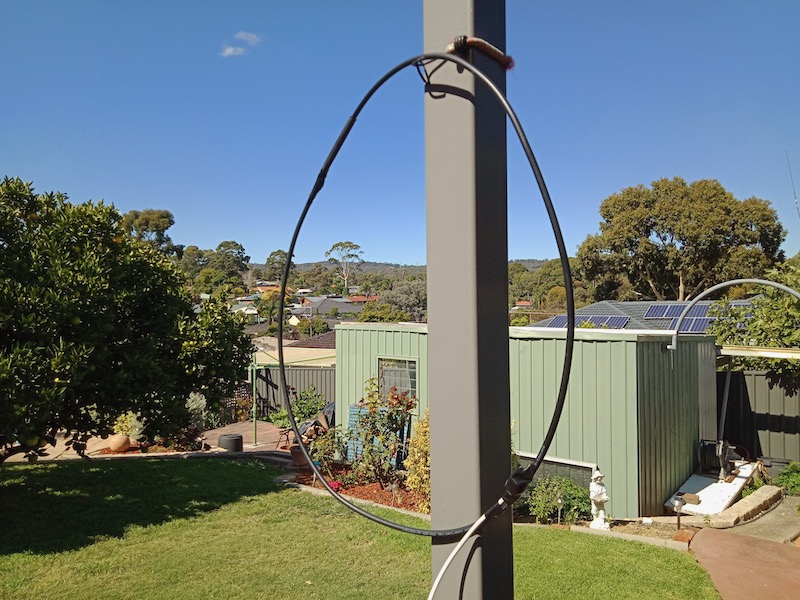



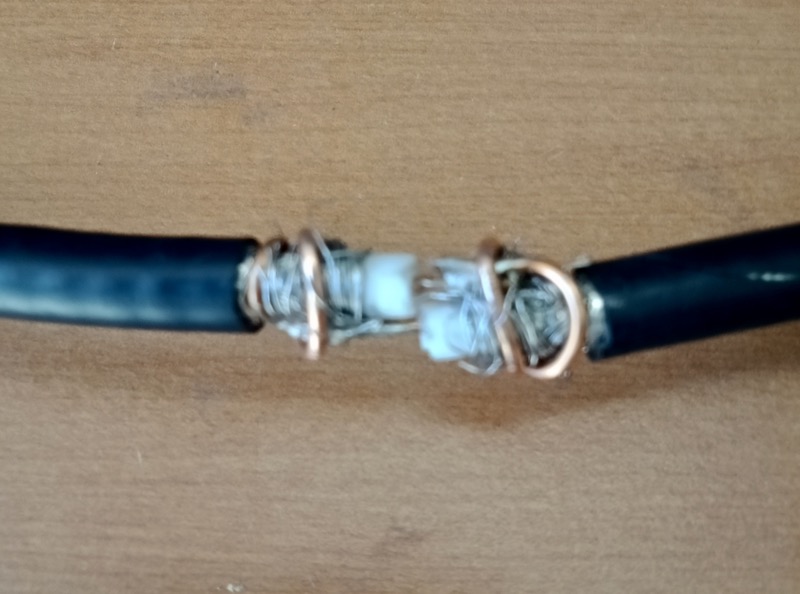
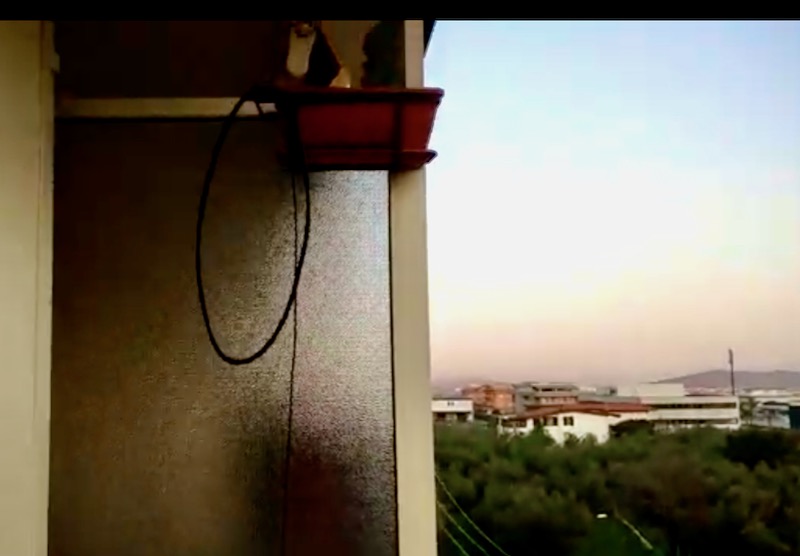
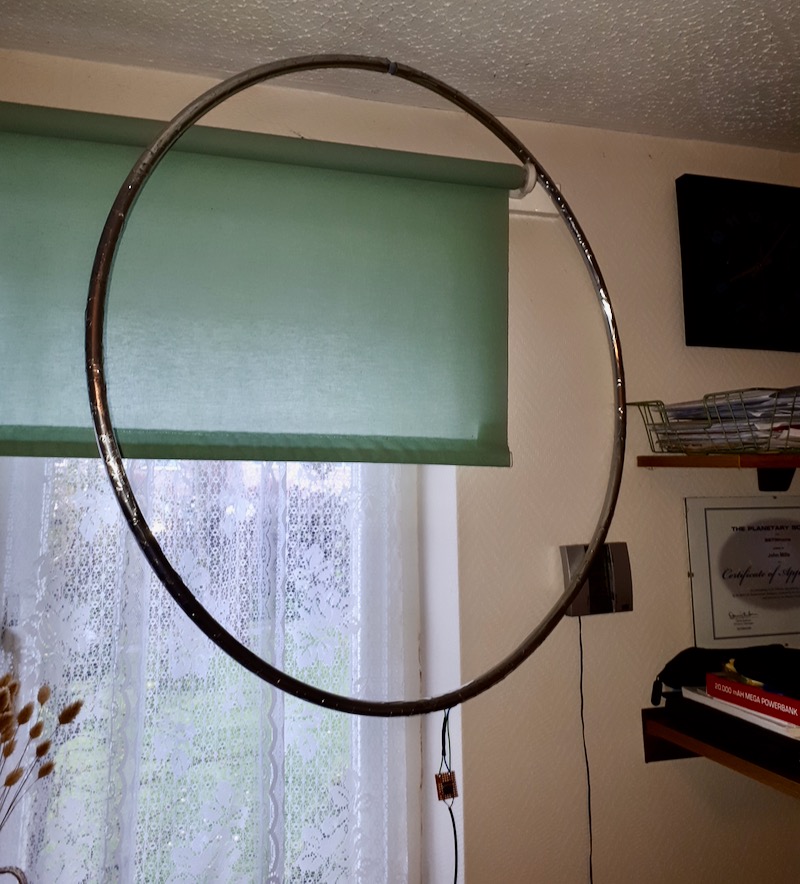



Please describe the transformer and put a diagram/photo. TNX
Thomas, I’ve already sent you the link, but at this point given the readers interest I believe that this document
https://www.george-smart.co.uk/wordpress/wp-content/uploads/2017/02/EWS-Article-in-MW-News.pdf
may be of interest to other loop builders; since not only it goes in deep details about loop construction, but also shows how to improve the loop performances by using some careful design and adding a small preamp unit which, according to the author doesn’t suffer from IMD, boosts weak signals quite a bit and, due to proper coupling, improves the loop nulls (30dB according to the author)